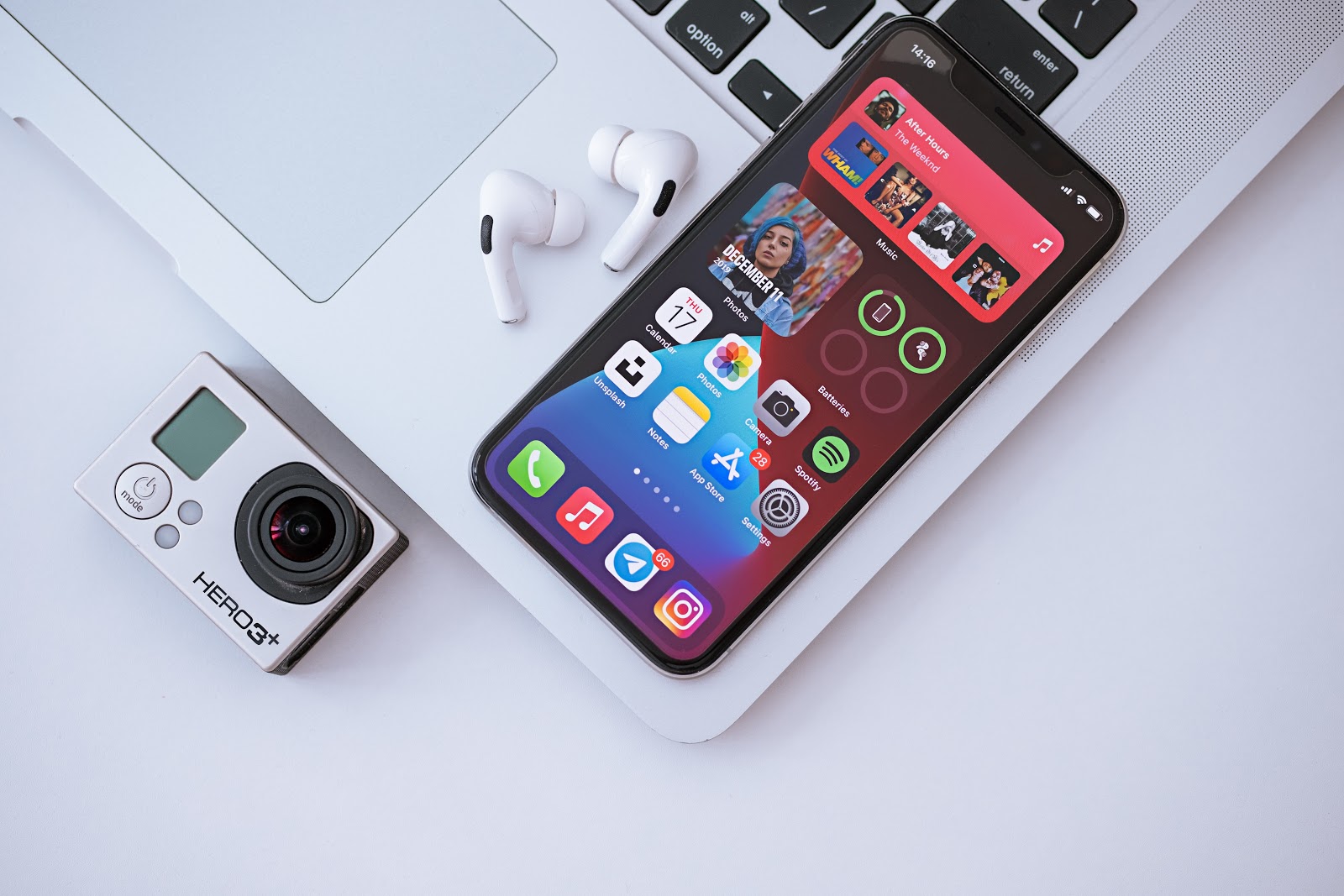Apple users now have the option to put widgets on their home screens. These widgets can show data from apps like Health and Apple Music. (Photo used with permission of Omid Armin)
On September 14, Apple released the long-awaited iOS 14 update to the public.
The update contains many new features and brings new life to older software. “iOS 14 brings a fresh look to the things you do most often, making them easier than ever” The company said on its website. But, with this update, it is likely that many users are not aware of all the new features.
One of the most prominent features of the software update was the home screen redesign. These new features fall into two categories, widgets and the app library.
Widgets are size-customizable information blocks that a user can add to their home screen. They display all sorts of data, such as weather and the news. A feature called Smart Stack can also be enabled that will show the most optimal widget for the user’s current time and place.
Widgets are added to the home screen by holding down on the home screen and clicking on the plus sign in the top right corner.
The app library is a page at the end of the home screen with every app on the device. Every app is automatically organized into categories like productivity and entertainment. The most used apps will also show at the top of the library.
Apple has also rolled out a feature called compact UI. This new feature made multiple actions smaller so they would not take up the whole screen anymore. For example, Siri also now appears in a small circle at the bottom of your screen and any results will appear in a bar at the top of the screen. Also, phone calls now appear in a notification-like badge at the top of the screen instead of taking up the whole device.
Picture-in-picture is a new feature similar to the compact UI. Picture in picture is a feature that lets you watch videos or continue to facetime someone while you are in another app. The video or call will appear in a small box in which the user can drag to any corner and make smaller or larger by pinching and resizing the box.
This update was not just about updating old features. Apple also added an app called Translate which, translates multiple languages in real-time. Translate currently supports 11 languages and can translate both voice and text entries. Two different options called conversation mode and attention mode are also both available.
Speaking of apps, Messages has also received a few updates. Users can now pin conversations to the top of the app by holding down the message thread. It is also possible to respond to only one specific message in a group chat, which will create a more focused message thread. Finally, it is now possible to mention someone in a conversation and it will message them directly.
iOS 14 has brought hundreds of small changes, some are significant, some are practically undetectable. But no matter how small many of them are, iOS 14 is one of the biggest updates Apple has released to its users in a long time. To learn more about all of the features in iOS 14 and how to operate it, visit MacRumors for a more in-depth overview of this update.

Hi! My name is Cassidy and I am a staff writer for The Mycenaean. I am also a member of Book Club and Tech Theatre.

Leave a Reply